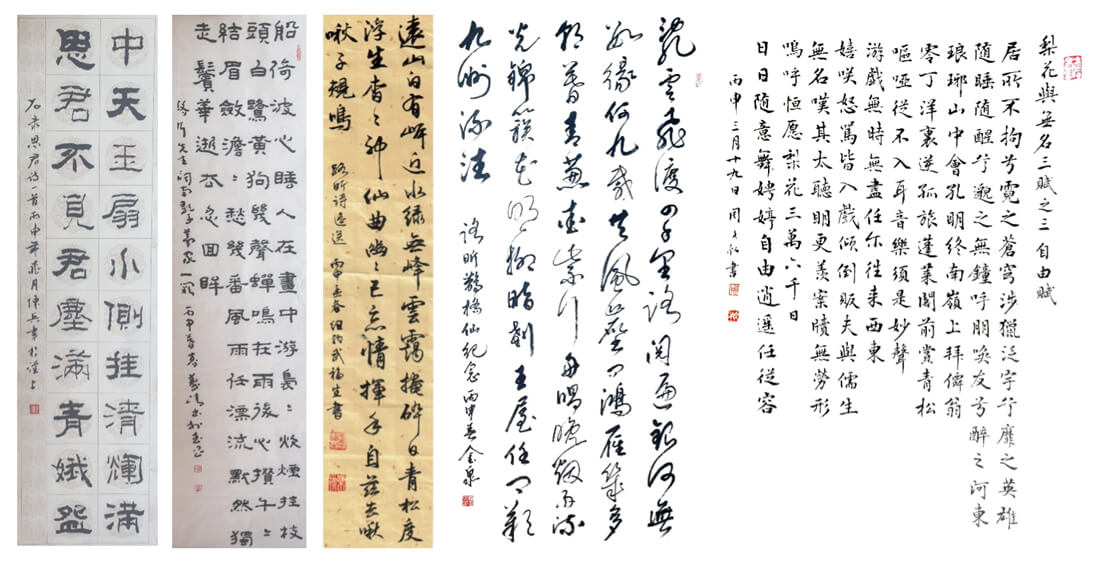Principal Investigator

Xin Lu, Ph.D.
My research goal is to develop novel insights into the genomic, genetic and molecular mechanisms of tumor immunology, organotropic metastasis and treatment resistance, and apply such knowledge to develop and improve therapeutic interventions to benefit cancer patients. My laboratory at University of Notre Dame is focused on identifying cancer cell intrinsic and extrinsic mechanisms of tumor immune evasion, particularly in advanced genitourinary malignancies (prostate, penile, kidney) and breast cancer. My recent publications firmly establish that immunosuppressive myeloid cells, especially those of the polymorphonuclear lineage, play the predominant role in inducing the exhaustion of cytotoxic T lymphocytes in prostate cancer and penile cancer. Our research results also reveal a number of targetable mechanisms on how the oncogenic signaling in neoplastic cells exerts the cell non-autonomous functions to control the cancer-immune interactome in solid tumors. My laboratory is interested in developing chemical or biologic agents and dietary interventions as emerging cancer therapies (for example, small-molecule inhibitors of the chromatin effector Pygopus 2, antibody-drug conjugates, CAR-NK cells, ketogenic supplement as sensitizer to immunotherapy). Our research approach integrates genetically engineered mouse models, functional genomics, experimental therapeutics, and cutting-edge experimental and computational methodologies (single cell RNA-seq, spatial transcriptomics, high-throughput drug and CRISPR/cas9 screen, molecular digital pathology, multi-omics integration, etc.).
Contribution to Science with Selected Publications
1. My most recent contribution to science centers on the role and therapeutic targeting of immunosuppressive myeloid cells in genitourinary malignancies, in particular, prostate cancer and penile cancer. Prostate cancer is the most commonly diagnosed noncutaneous malignancy and the second leading cause of cancer mortality for American men. The second most common cancer in men worldwide, prostate cancer accounts for 15% of all cancers diagnosed in men globally. Using mouse models of aggressive prostate cancer, I co-discovered the massive infiltration of myeloid-derived suppressor cells (MDSCs) into the tumor microenvironment. Targeting MDSCs by blocking the YAP/Cxcl5/Cxcr2 signaling axis significantly impaired tumor progression. I developed the first chimeric genetically engineered mouse (GEM) model of metastatic castration-resistant prostate cancer (CRPC). Using this model, I demonstrated that kinase inhibitors (Cabozantinib, Dactolisib, PI3K isoform-specific inhibitors) and CXCR1/2 inhibitor diminished MDSC infiltration and activities. More importantly, these drugs significantly sensitized immunotherapy-refractory metastatic CRPC to the immune checkpoint blockade therapy (anti-CTLA4 and anti-PD1 antibodies). This finding illuminates a clinical path hypothesis for using combinatorial immunotherapy to treat lethal prostate cancer. More recently, in my own laboratory, we made an independent finding that MDSCs can suppress T cells through nitrating the essential tyrosine kinase LCK (PNAS, 2018). The combination of MDSC-targeted therapy and immune checkpoint blockade may prove to be an effective approach to treating a variety of cancer types, including some rare cancers. Specifically, in the first GEM model of penile squamous cell carcinoma, we reported that drugs that diminish MDSCs (cabozantinib, celecoxib) synergized significantly with immune checkpoint blockade to eradicate the tumor burden (Nature Communications, 2020).
- Lu X, Horner JW, Paul E, Shang X, Troncoso P, Deng P, Jiang S, Chang Q, Varma A, Han JW, Spring DJ, Sharma P, Zebala JA, Maeda DY, Wang YA, and DePinho RA. Effective Combinatorial Immunotherapy for Metastatic Castration-Resistant Prostate Cancer. Nature. 2017; 543(7647): 728-732. [PMID: 28321130; PMCID: PMC5374023]
- Feng S, Cheng X, Zhang L, Lu X, Chaudhary S, Teng R, Frederickson C, Champion MM, Zhao R, Cheng L, Gong Y, Deng H, Lu X. Myeloid-Derived Suppressor Cells Inhibit T Cell Activation through Nitrating LCK in Mouse Cancers. Proc. Natl. Acad. Sci., 2018; 115(40):10094-10099 [PMID: 30232256]
- Huang T, Cheng X, Chahoud J, Sarhan A, Tamboli P, Rao P, Guo M, Manyam G, Zhang L, Xiang Y, Han L, Shang X, Deng P, Luo Y, Lu X, Feng S, Ferrer MM, Wang YA, DePinho RA, Pettaway CA, Lu X. Effective Combinatorial Immunotherapy for Penile Squamous Cell Carcinoma. Nature Communications. 2020; 11(1): 2124. [PMID: 32358507]
- Zhu Y, Zhao Y, Wen J, Liu S, Huang T, Hatial I, Peng X, Al Janabi H, Huang G, Mittlesteadt J, Cheng M, Bhardwaj A, Ashfeld BL, Kao KR, Maeda DY, Dai X, Wiest O, Blagg BSJ, Lu X, Cheng L, Wan J, Lu X. Targeting the chromatin effector Pygo2 promotes cytotoxic T cell responses and overcomes immunotherapy resistance in prostate cancer. Sci Immunol. 2023;8(81):eade4656. [PMID: 36897957]
2. Genetic changes and dysregulated signaling pathways play foundationally important roles in driving the oncogenesis and metastasis of prostate cancer. I have identified several important genetic and molecular mechanisms for advanced lethal prostate cancer, and the key functional players in these mechanisms are promising prognostic biomarkers and therapeutic targets for treating prostate cancer. For example, the gene encoding the chromatin effector PYGO2 is frequently amplified in advanced prostate cancer and is essential for prostate cancer primary tumor growth and metastasis development in animal models. We also uncovered the cooperative function of CHD1 and SPOP in the DNA damage response during prostate tumorigenesis.
-
- Lu X*, Jin E*, Cheng X, Feng S, Shang X, Deng P, Jiang S, Chang Q, Rahmy S, Chaudhary S, Lu Xuemin, Wang YA, DePinho RA. Opposing Roles of TGFβ and BMP Signaling in Prostate Cancer Development. Genes & Development. 2017; 31(23-24):2337-2342. (*Co-first author) [PMID:29352019]
- Lu X*, Pan X*, Wu CJ, Zhao D, Feng S, Zang Y, Lee R, Khadka S, Amin SB, Jin E, Shang X, Deng P, Luo Y, Morgenlander WR, Weinrich J, Lu X, Jiang S, Chang Q, Navone N, Troncoso P, DePinho RA, Wang YA. An In Vivo Screen Identifies PYGO2 as a Driver for Metastatic Prostate Cancer. Cancer Research. 2018; 78(14):3823-3833. (*Co-first author) [PMID: 29769196]
- Zhu Y, Wen J, Huang G, Mittlesteadt J, Wen X, Lu X. CHD1 and SPOP Synergistically Protect Prostate Epithelial Cells from DNA Damage. The Prostate, 2020; doi: 10.1002/pros.24080. [PMID: 33022763]
- Zhao Y, Peng X, Baldwin H, Zhang C, Liu Z, Lu X. Anti-androgen therapy induces transcriptomic reprogramming in metastatic castration-resistant prostate cancer in a murine model. Biochim Biophys Acta Mol Basis Dis. 2021 Jul 1;1867(7):166151. doi: 10.1016/j.bbadis.2021.166151. [PMID: 33892077]
3. My lab has tremendous interest in sporadic and familial renal cell carcinoma, as well as von Hippel-Lindau (VHL) disease. My lab has identified a synonymous VHL mutation (c.414A > G, p.Pro138Pro) that causes pathogenic VHL disease especially hemangioblastoma through a dysregulated splicing mechanism. Our research revealed that downregulation of UQCRH (the hinge protein for the mitochondrial complex III) by promoter hypermethylation promotes kidney carcinogenesis through exacerbating the functional decline of mitochondria thus reinforcing the Warburg effect. More recently, we took a multi-omics approach to characterize the molecular impact of VHL-reinstallation in VHL-null cancer cells and identify 57 putative HIF-independent VHL targets with two of them (TGFBI, NFKB2) validated experimentally.
- Liu F, Calhoun B, Alam MS, Sun M, Wang X, Zhang C, Haldar K, Lu X. Case report: a synonymous VHL mutation (c.414A > G, p.Pro138Pro) causes pathogenic familial hemangioblastoma through dysregulated splicing. BMC Med Genet. 2020;21(1):42. [PMID: 32106822]
- Luo Y, Medina Bengtsson L, Wang X, Huang T, Liu G, Murphy S, Wang C, Koren J 3rd, Schafer Z, Lu X. UQCRH downregulation promotes Warburg effect in renal cell carcinoma cells. Sci Rep. 2020 Sep 14;10(1):15021. [PMID: 32929120]
- Wang X, Hu J, Fang Y, Fu Y, Liu B, Zhang C, Feng S, Lu X. Multi-Omics Profiling to Assess Signaling Changes upon VHL Restoration and Identify Putative VHL Substrates in Clear Cell Renal Cell Carcinoma Cell Lines. Cells. 2022;11(3). [PMID: 35159281]
4. Breast cancer is the most common malignancy and second leading cause of cancer mortality for American women. Breast cancer mortality is caused by distant metastasis, with bone as one of the preferred organs to be colonized by breast cancer cells. Bone metastasis of breast cancer is caused by intricate tumor/osteoblast/osteoclast interactions in a “vicious signaling cycle”, understanding of which holds promise for new therapeutic opportunities. I uncovered several new mechanisms on how cancer cells hijack the normal physiology of the bone homeostatic circuits to develop osteolytic metastasis. The transition from dormant disseminated tumor cells to overt metastasis by upregulation of VCAM-1 is particularly intriguing, as it illustrates how heterotypic interactions between breast cancer cells and osteoclast progenitor cells in the bone can dictate cell fate and metastasis status.
-
- Lu X, Wang Q, Hu G, Van Poznak C, Fleisher M, Reiss M, Massagué J, and Kang Y. ADAMTS1 and MMP1 proteolytically engage EGF-like ligands in an osteolytic signaling cascade for bone metastasis. Genes & Dev. 2009; 23:1882-1894. [PMID: 19608765; PMCID: PMC2725946]
- Lu X, and Kang Y. Chemokine (C-C Motif) ligand 2 engages CCR2+ stromal cells of monocytic origin to promote breast cancer metastasis to lung and bone. J. Biol. Chem. 2009; 284: 29087-29096. [PMID: 19720836; PMCID: PMC2781454]
- Lu X, Yan C, Yuan M, Wei Y, Hu G, and Kang Y. In vivo dynamics and distinct functions of hypoxia in primary tumor growth and organotropic metastasis of breast cancer. Cancer Res. 2010; 70: 3905-3914. [PMID: 20442288; PMCID: PMC2872139]
- Lu X, Mu E, Wei Y, Riethdorf S, Yang Q, Yuan M, Yan J, Hua Y, Tiede B, Lu X, Haffty B, Pantel K, Massagué J, and Kang Y. VCAM-1 promotes osteolytic expansion of indolent bone micrometastasis of breast cancer by engaging α4β1-positive osteoclast progenitors. Cancer Cell. 2011; 20:701-714. [PMID: 22137794; PMCID: PMC3241854]
5. Cell fusion may play an active role to promote cancer progression, metastasis and immune evasion. Through a spontaneous cell fusion model, I demonstrated that metastasis tropism in a fused cell can be inherited from two parental cancer cells with distinct metastatic organo-specificity. Further study revealed a previous unknown mechanism for enhancing metastatic potential through spontaneous ploidy duplication. These studies provide new insights into the cellular mechanisms that can govern the metastatic phenotype.
-
- Lu X, and Kang Y. Efficient acquisition of dual metastasis organotropism to bone and lung through stable spontaneous fusion between MDA-MB-231 variants. Proc. Natl. Acad. Sci. 2009; 106:9385-9390. [PMID: 19458257; PMCID: PMC2695061]
- Lu X, Lu X, and Kang Y. Organ-specific enhancement of metastasis by spontaneous ploidy duplication and cell size enlargement. Cell Res. 2010; 20:1012–1022. [PMID: 20603645; PMCID: PMC2932852]
- Lu X, Kang Y. Cell fusion as a hidden force in tumor progression. Cancer Res. 2009; 69(22):8536-9. [PMID: 19887616; PMCID: PMC2783941]
Complete List of Published Work in MyBibliography (over 60 Publications):
https://www.ncbi.nlm.nih.gov/myncbi/14A325uGbh1Ab/bibliography/public/
Extra-professional life
I enjoy indoor and outdoor activities with my family. At my leisure time, I write Chinese poems and tune to various styles of music. Below is calligraphic rendering of a few of my poems.
